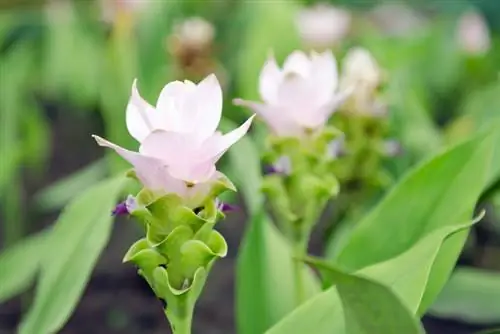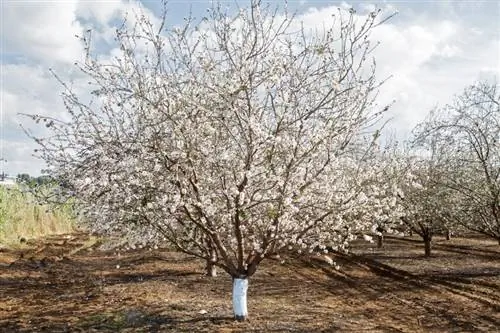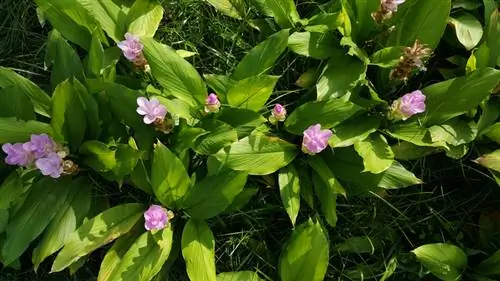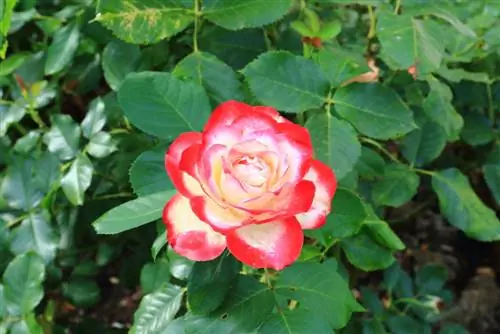- Author admin [email protected].
- Public 2023-12-16 16:46.
- Last modified 2025-01-23 11:20.
The so-called saffron root is best known as a cooking ingredient as a component of curry powder, as the powder obtained from the rhizomes has a strong yellow-coloring effect. Due to the eye-catching flowers, the plant, which grows around 80 to 100 cm high, is also valued as a decorative house and garden plant.
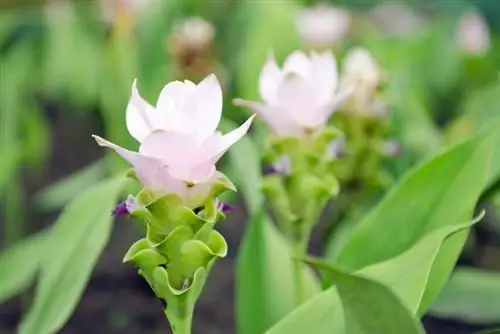
How do I properly care for my turmeric plant?
The care of turmeric includes regular watering without waterlogging, repotting in spring, cutting off withered flowers and leaves, protection from pests, sparing fertilization during the growth phase and overwintering the rhizomes in a dark room at approx. 15°C.
How often should turmeric be watered?
Since the turmeric plant comes from tropical latitudes with regular rainfall, it likes it to be evenly moist. The soil around the rhizomes should never dry out completely, but the plant does not like waterlogging either. Therefore, when growing in a pot, care should be taken to ensure appropriate drainage below the planting substrate. When growing outdoors, you should water regularly, sparingly, especially during the summer flowering period.
When and how should the turmeric plant be repotted?
When repotting, it depends on how the plants are cultivated:
- in the pot on the windowsill
- as an outdoor potted plant
- planted with the tubers in the outdoor bed
As this is a non-frost-resistant plant species, tubers must be dug up from the outdoor bed in early autumn and kept in the dark indoors over the winter. Plants placed indoors in pots are usually repotted or divided into a slightly larger pot before new growth appears in the spring.
Does the saffron root have to be cut back?
Since the above-ground parts of the plant die after the flowering period and only the rhizome survives as a survival organ, the withered leaves and flowers are simply cut off. Removing wilted flowers during flowering can encourage more flowers to form in the same season.
What diseases and pests affect the plant?
If the turmeric in the house is too warm and dry, an infestation with spider mites can occasionally occur. These can be recognized by the white webs and combated with a sharp jet of water or appropriate products (€16.00 at Amazon) from specialist retailers. Other deficiency symptoms are almost exclusively due to care errors.
How and when should turmeric be fertilized?
During the growth phase from spring to summer, commercially available liquid fertilizers or fertilizer sticks can be used sparingly. Fertilization should be stopped by September at the latest. Also relevant to the question of fertilization is whether the rhizomes are intended for consumption or not.
How are the plants overwintered successfully?
The plants or their tubers should definitely be brought indoors when the temperatures outside fall below around 10 degrees Celsius. You can either dig up the rhizomes and clean them a little with a cloth, wrap them in sand or overwinter them in a pot with a relatively dry substrate. This should be done in a dark room and at around 15 degrees Celsius.
Tip
When watering your turmeric plants, be careful not to wet the flowers with water too often. If water remains permanently in the notches of the spiked inflorescences, in the worst case, flower rot can occur.

